Soju is one of the most consumed beverages in the world today, especially in South Korea. In 2017, Koreans drank 3.6 billion bottles. That’s 86 bottles per adult in one year, or two shots a day. Yet soju was not always the most popular drink in Korea. The history of soju follows the history of Korea itself. Soju is a distilled Korean liquor that has a fascinating history dating back to the Three Kingdoms period. The Korean peninsula has had a long standing tradition of making alcohol – longer than there has been a Korea. Get ready to explore the rich culture behind one of Korea’s most beloved drinks and learn the history of soju.
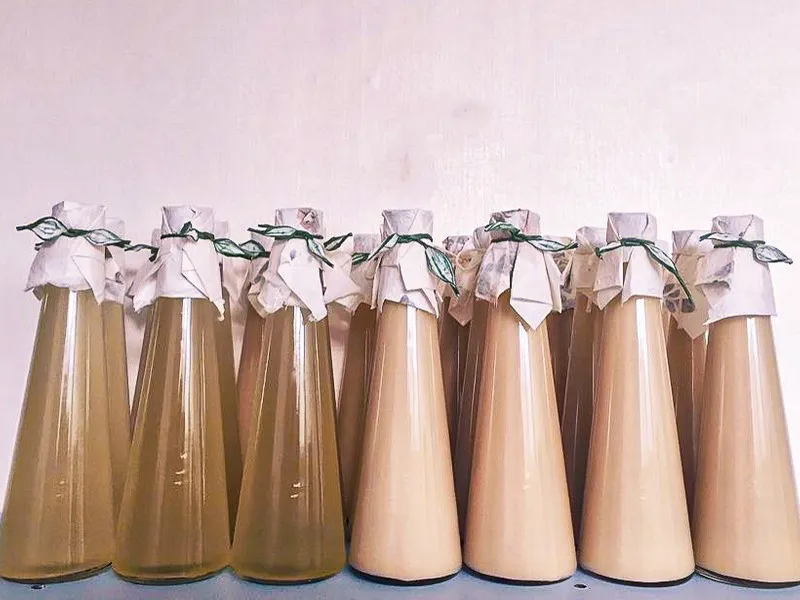
How it all began
Originally, Korean people drank rice brews. Rice was fermented with nuruk starter, or a wild mold. The resulting beverage separated. The bottom was cloudy, and the top was clear. The clear part, the cheongju, was reserved for royalty. Everyone else drank the cloudy stuff.
Then came the Mongols.
They brought over Middle Eastern methods of distillation, specifically the methods for making medicine and then Arak. This is a distilled spirit made from wheat. In Korea, it was modified for its local rice brew.
During the Three Kingdoms period (57 BCE – 668 CE), there was a drink called Mi-inju (미인주) “Beauty of the Pearl.” This liquor was fermented by women chewing grain and spitting it out. This method still survives in Peru. There is also a Japanese beverage made this way, called Kuchikamizake. The enzymes in the saliva worked as fermentation starter and as way to release the sugars from the starch.
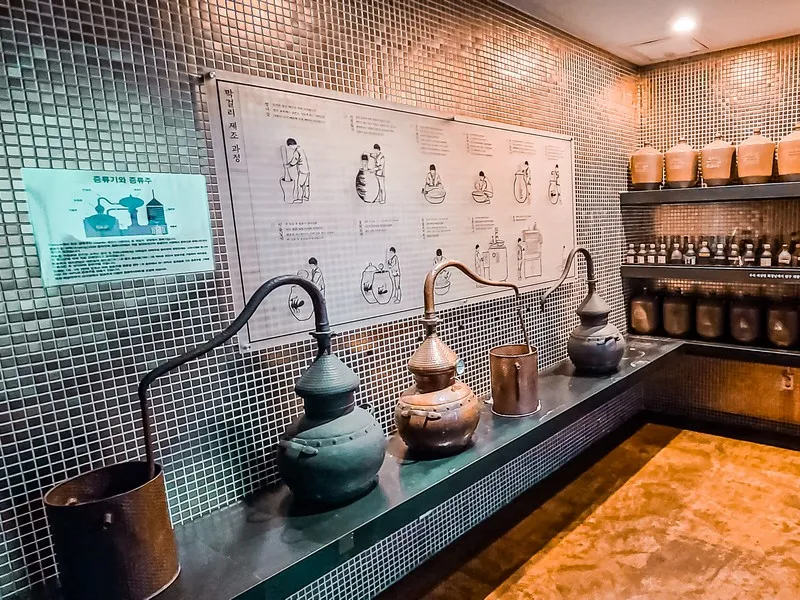
Ancient Koreans also knew how to cultivate yeast. There are Japanese records that a person named Susubori from the southwestern Baekje kingdom taught the Japanese how to make yeast and brew sake. In Seoul, there is a Susubori Academy, where you can learn how to make traditional Korean liquor in both Korean and English. There are records that a Baekje king named Eungsin drank one of Susubori’s brews and sang a song.
Korean Brewing Basics
A base brew was made from rice and nuruk. When fermented, the liquid separated into a golden clear liquor, known as cheongju or yakju. The nobles drank this. Yakju (“medicinal liquor”) originally had medicinal herbs in it. These days cheongju and yakju are used interchangably. The cloudy part at the bottom was the takju, reserved for the commoners. The word makgeolli comes from “mak geollyeotda” 막 걸렸다, meaning “just filtered.” Today it’s takju that has been watered down to make it easier to drink.
Alcohol making had become an art as central and as diverse as kimchi. They say that there are over 200 kinds of kimchi. Well, by the 19th century there were over 170 known types of Korean alcohol. Large clans made their own for use in sacrificial ceremonies.
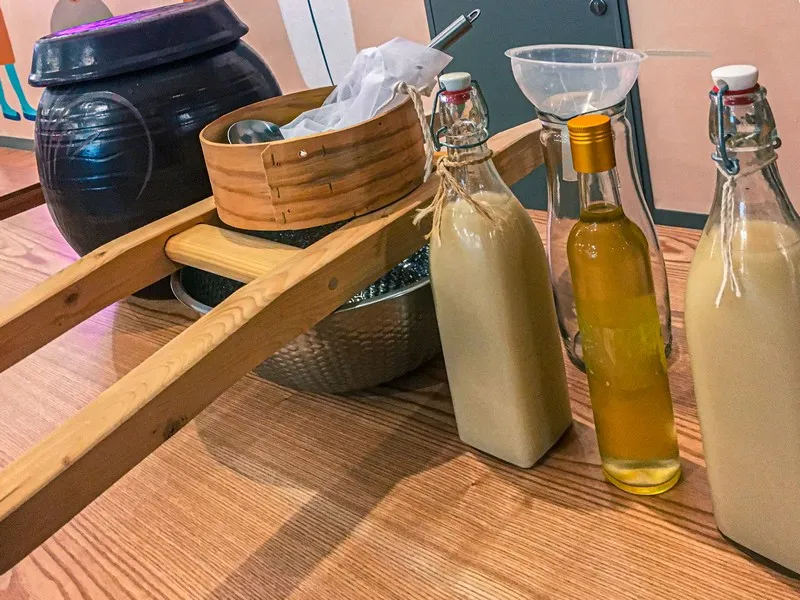
The Birth of Eastern Distillation
The history of soju itself starts here. Near the end of the Goryeo Dynasty (918 – 1392), Mongols had taken over much of Asia, the Middle East, and parts of Eastern Europe. The Pax Mongolia brought distillation techniques from modern day Syria to modern Korea. In the royal city of Gaesong, this was and still is known as arakju, named after Arabic arak liquor. Distilled Soju also came to be in the more southern city of Andong. This was because the Mongols used Andong as their base of operations for their failed campaigns into Japan.
Outside of Andong, soju became associated with northern Koreans. Young nobles from the north would come down south to the capital to prepare for the meritocracy exams. Many of these northerners congregated in the modern Seoul neighborhood of Gongdeok. Their wives made distilled soju and sold it for a profit. That was one way soju entered Seoul society.
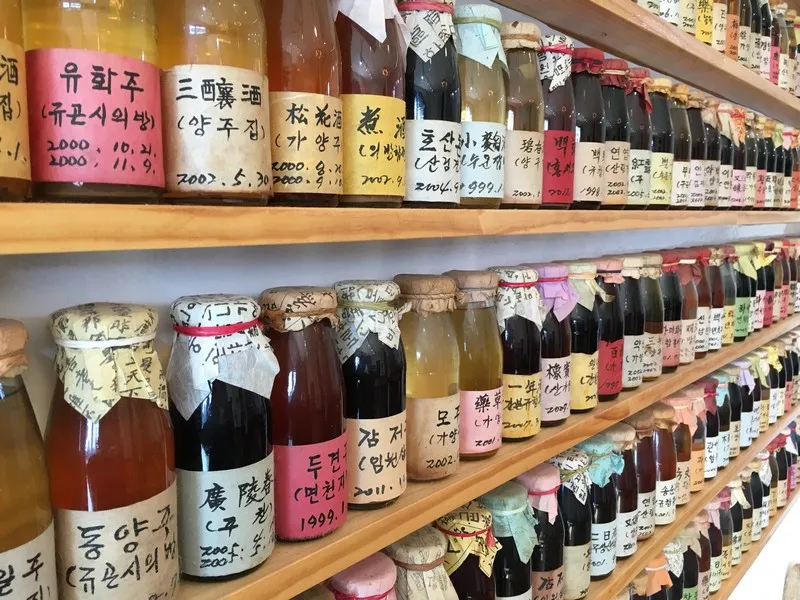
The following Joseon era (1392-1910) governments banned commercial sales. Authorities strove to maintain order and healthy society. As with most prohibition efforts through history, alcohol brewing went underground. Specifically the moonshine was made in homes, controlled by women. It was a women’s game. They made enough for their households in small batches using high quality ingredients. No one wrote recipes, but methods were shared locally from town to town. Soju started to come into its own.
In 1910, Japan annexed Korea as its first imperial colony. As with the Borg on Star Trek, Japan forcefully assimilated Korea. They accomplished this by eliminating Korea’s traditions, suppressing the Korean language, and even making families change their names to Japanese ones. The Japanese also outlawed soju and all home brewing. Thousands of recipes disappeared forever. This almost exterminating the industry. Korean liquor makers converted to making a hybrid makgeolli-sake product using Japanese Koji mold instead of Korean nuruk.
Commercial brewing returned, but it was for making beverages in the Japanese style. The colonial government awarded regional licenses to mini-breweries. This was the beginning of the huge disconnect between traditional soju and modern soju. These breweries started making Japanese drinks for the Japanese. They stopped using Nuruk and converted to using Koji.
Korea was liberated in 1945, but it was broken and beaten down and divided. The alcohol industry was in a shambles. The Korean War (1950-1953) obliterated it even more.
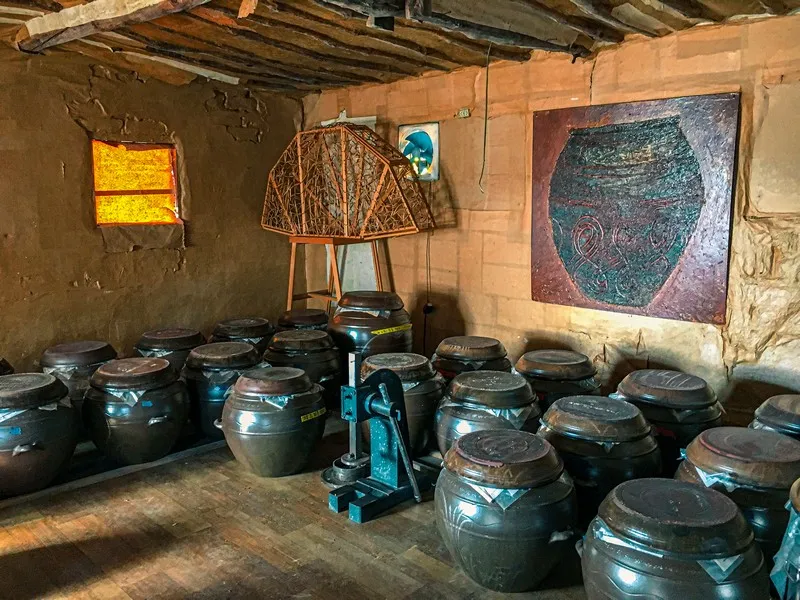
The History of Modern Diluted Soju – The Green Bottle Stuff
The dictator Park Chung-hee came into power in South Korea in 1963. His goal was to turn South Korea from one of the poorest nations in the world to a thriving modern economy. This involved strong arm tactics.
We usually classify soju into traditional distilled soju and commercial diluted soju. Traditionally, soju was fermented from rice and nuruk and then distilled into a high octane spirit. The diluted kind is what you usually see in the green bottles. The original liquor in diluted soju comes from wheat, tapioca, barley, sweet potato, or potatoes–whatever base starch is cheapest. Corporate diluted soju makers create a liquor that is at least 95% ethanol. It’s then diluted with sweeteners and additives.
The South Korean government established the Grain Management Law in 1965, which was how diluted soju came about. At the time, rice production couldn’t keep up with demand. In 1966, there was a rice famine. Rice was outlawed for frivolities like making soju. Soju companies, like HiteJinro, set out to make it with alternative starches. Tapioca, sweet potato, and later wheat flour from U.S. support were used to make pure grain alcohol (PGA). It was a dry unpalatable product. The alcohol was diluted with artificial sweeteners to smooth it out.
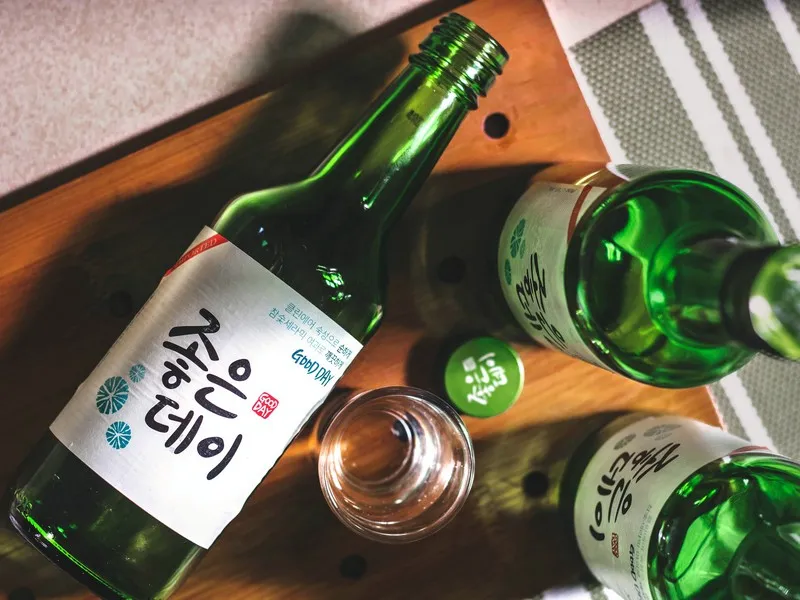
Making liquor from rice had become a frivolous decadence to a government focused on building South Korea into a modern economy. Companies created diluted soju as an easier, cheaper alternative. Soju suddenly became super cheap. Makgeolli at the time wasn’t that good, especially the stuff made from wheat and caustic chemicals because of the rice restrictions. The new diluted soju boasted lower alcohol than traditional distilled soju. Thus one could continue to drink into the evening without getting sick as quickly. Suddenly, it dominated the market.
Green bottle soju was born!
It used to be potent, around 35% ABV. It was a dry unpalatable product. It was more about function than flavor. The alcohol was diluted with artificial sweeteners to smooth it out. Saccharine was used because the yeast wouldn’t digest it, making it sweet all day long.
Soju Wars
In 1973, a new system was implemented restricting nationwide production. This created regional producers, like Chamisul in Seoul, Cheongpung in North Chungcheong Province, Charm in North Gyeongsang Province, Good Day in South Gyeongsang Province, Hallasan in Jeju Island, Leaf Saeju in South Jella Province, Hite in North Jeolla Province, and O2 Rin in South Chungcheong Province.
The rice ban was lifted in 1977, but green bottle soju had already established itself as an integral part of the new industrial South Korea. It was all about social identity.
The government eased the rules in 1981, letting producers sell their wares over wider areas and sparking a soju war. In 1996, the government eliminated all restrictions. This made it possible for producers to create more variety of products, usually easing up on the alcohol content and making “softer” soju brands. This was also when the home brewing ban was lifted. South Korea experienced a cottage revival of its lost traditions. Some quality products have come out, but they’re overshadowed by the big breweries and the big reputation of soju as a cheap-as-water social lubricant.
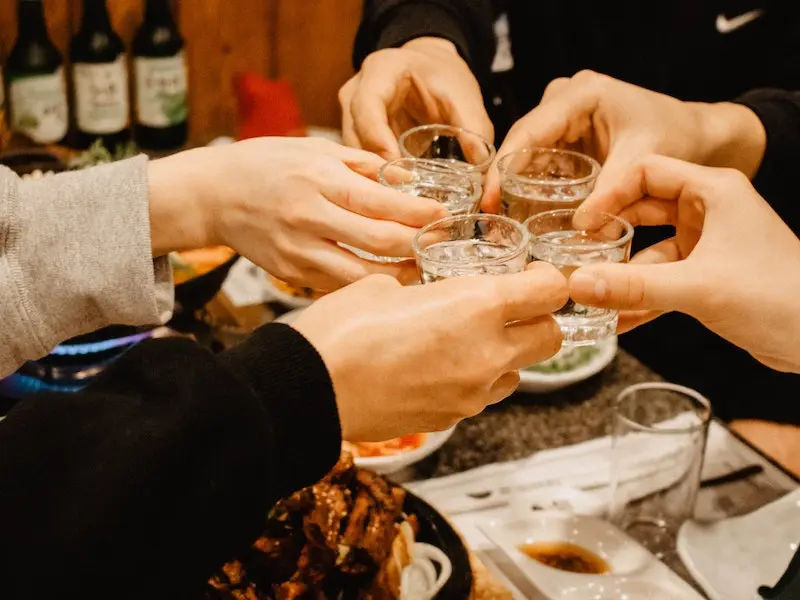
Longtime green bottle soju fans have noted that the alcohol content of soju has gone from 30% all the way down into the teens over the decades. After a couple of generations were imprinted with the taste of green bottle diluted soju, there was no going back.
The big old breweries can’t change easily. They aren’t set up for fermenting. They’re set up for chemical dilution. Their identities are tied to cheap green bottle soju. They are large ships who can’t turn easily. With the weak products they’ve been coming out with in soju, makgeolli, and beer, they aren’t showing signs of bringing traditional soju back.
The New Soju Wars
A new round of soju wars rumbled around 2007. For the first time ever, soju was losing ground in South Korea to foreign imports, mainly beer and wine. Then soju producers realized they had been neglecting a major demographic–women. They developed lower alcohol, sweeter, and even lower calorie soju to attract women. In 2015, they cracked the code: fruit flavored soju. This easy drinking low alcohol beverage became a hit with women and young adults. Yet it is a far cry from what one would call “soju” a century ago.
Around the time of the 1986 Asia Games and the 1988 Seoul Olympics, the Korean government realized the value of traditional soju like that from Andong. A slow underground revival of traditional sool started from that time. Traditional distilled craft soju has been making a comeback as South Koreans’ pockets have gotten fatter and their tastes have become more refined. Attitudes towards alcohol in the past decade have turned from drinking for inebriation to drinking for taste. Revivals and innovations are returning Korea to a land where over 170 types of liquor can be enjoyed again.

